Canada Past and Present at RCMP Heritage Centre
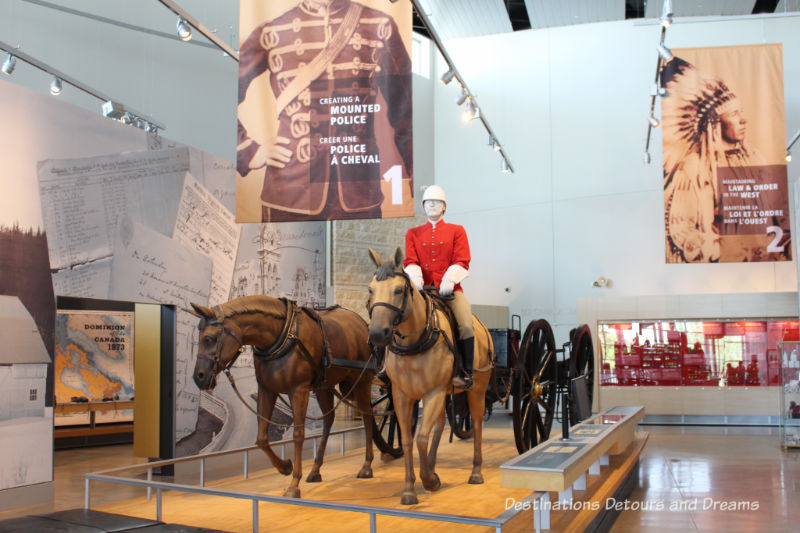
The RCMP Heritage Centre in Regina, Saskatchewan provides a look into Canada’s history through stories of the North-West Mounted Police and the Royal Canadian Mounted Police
(Last updated: June 2022)
I didn’t think I’d find a museum about a police force particularly interesting, but after hearing rave reports about the RCMP Heritage Centre in Regina, Saskatchewan I decided to visit the Centre. It was fascinating. I now highly recommend the museum for any visitors to Regina. The Heritage Centre provides historical information about the North-West Mounted Police (NWMP) who later became the Royal Canadian Mounted Police (RCMP), their role in the settlement of western Canada, and insight into modern policing.
Background
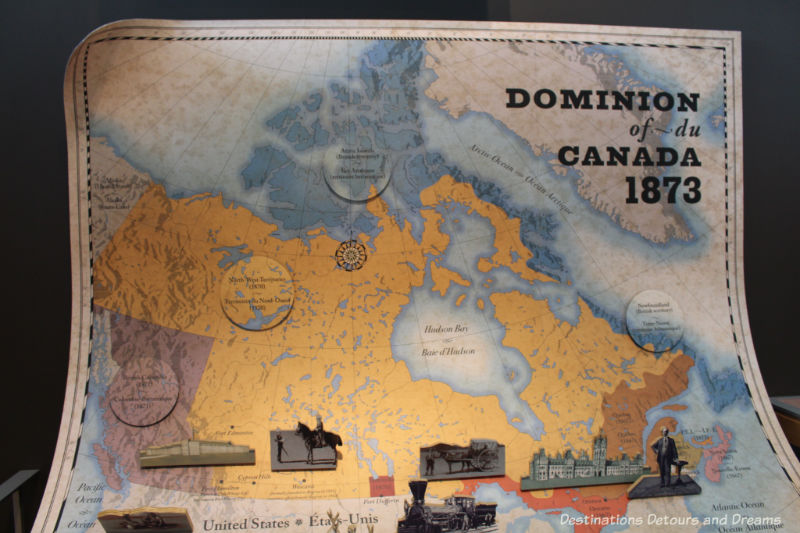
In the 1870s, the North-West Territories encompassed a vast area of land, covering what is now Alberta, Saskatchewan, most of Manitoba, portions of northern Ontario and Quebec, and the current Northwest Territories. The North-West Mounted Police were formed in 1873 to establish friendly relations with Indigenous peoples, enforce Canadian authority, pave the way for settlers, and maintain law and order on the frontier. Modelled on the Royal Irish Constabulary and inspired by the U.S. Army’s mounted rifle troops, the original troop of 300 men travelled on horseback and wore scarlet uniforms to affirm the British presence.
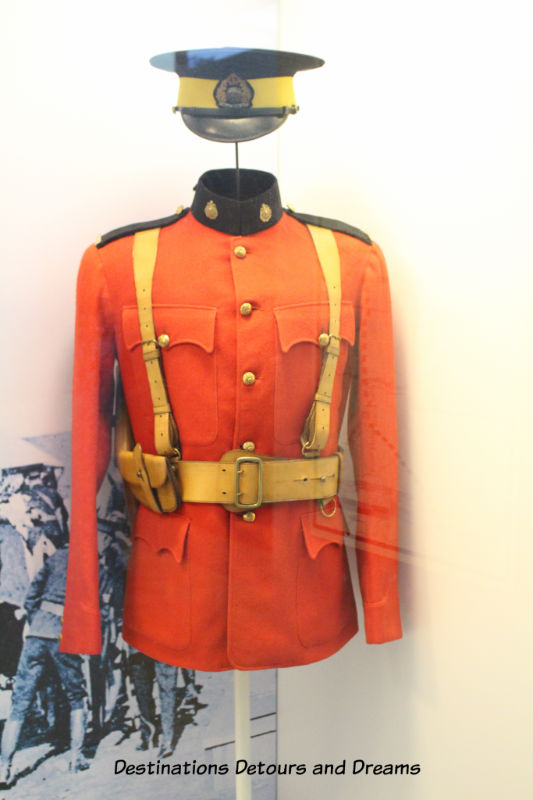
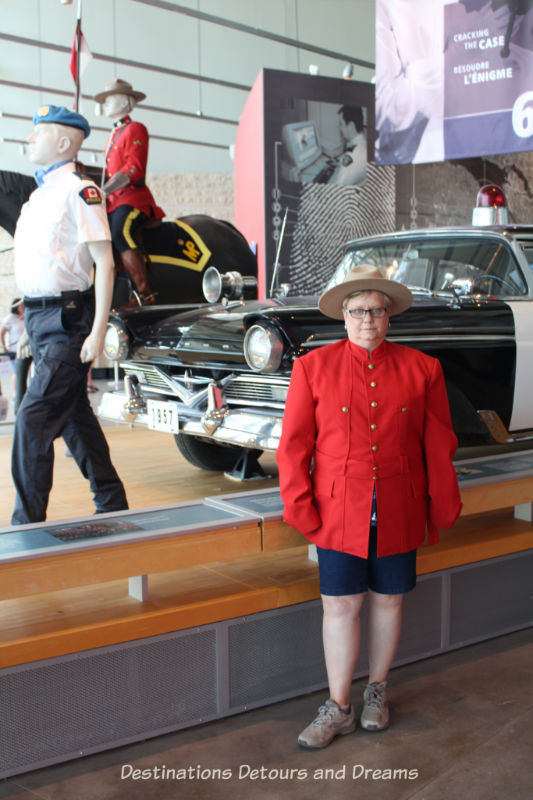
The North-West Mounted Police played a prominent role in the subsequent settlement of western and northern Canada. In 1874, they established their first outpost at Fort Macleod in what is now Alberta. Fort Walsh was built in the Cypress Hills in what is now southern Saskatchewan in 1875. It served as police headquarters from 1878 to 1882. In 1882, headquarters moved to Regina, which was then the capital of the North-West Territories. In 1904, King Edward VII bestowed royal designation and the force became the Royal North-West Mounted Police. In 1920, the Royal North-West Mounted Police and the Dominion Police Force joined to create the Royal Canadian Mounted Police (RCMP). Headquarters moved to Ottawa, Ontario. Training facilities remained in Regina.
Exploring History
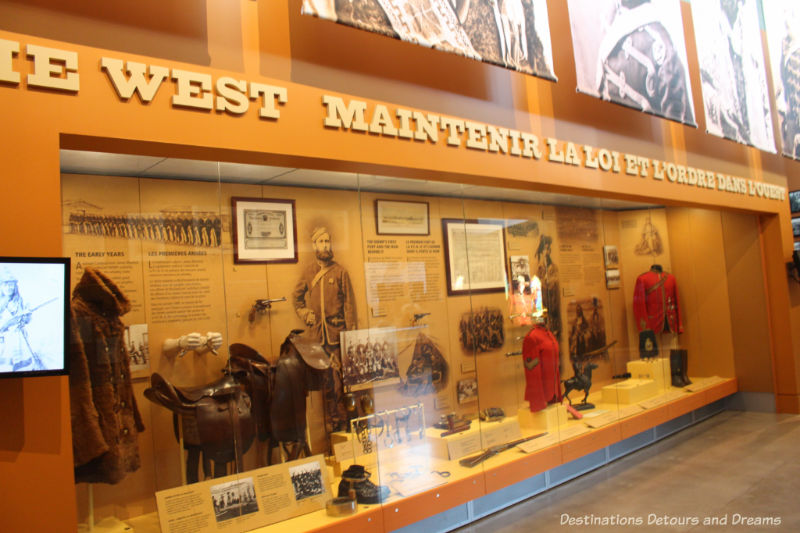
Exhibits in the first three galleries (Creating a Mounted Police, Maintaining Law and Order in the West, Protecting the North) tell the stories of the North-West Mounted Police early history and the corresponding settlement of western Canada. Stories include information about the force itself, patrolling the Arctic and looking for a mad trapper.
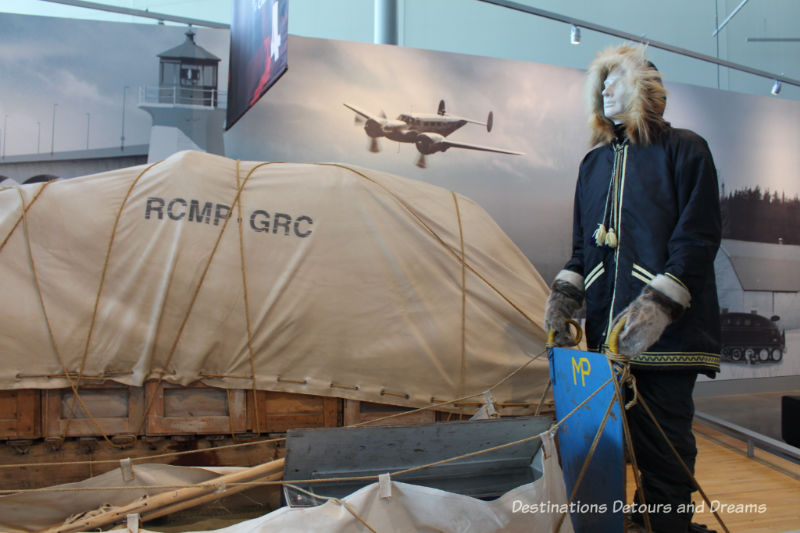
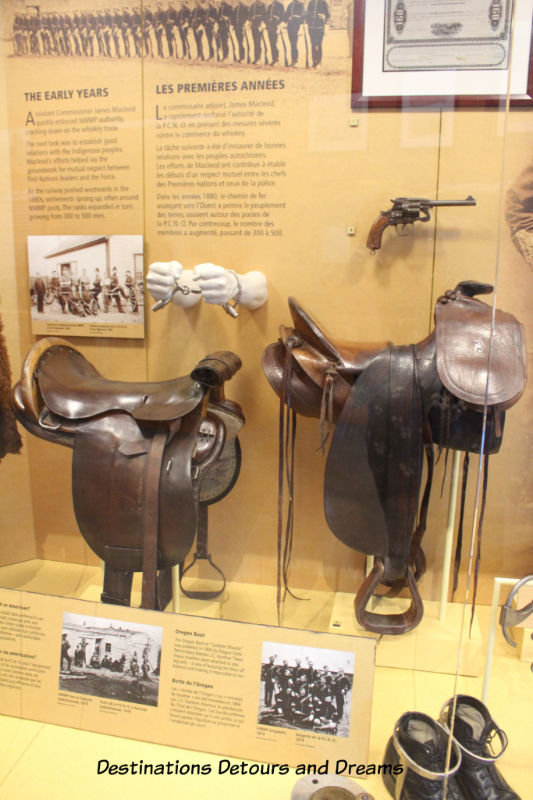
When the Mounted Police marched west, they did not find an empty land. Indigenous people of many nations had been on the plains for thousands of years. One of the force’s first tasks was getting rid of the whiskey trade, which had had a devastating effect on First Nations peoples. In 1874, the NWMP forced unscrupulous American whiskey traders to abandon Fort Whoop-Up, near what is now Lethbridge, Alberta, as well as other trading posts. The NWMP learned from the First Nations and formed diplomatic and friendly relations. But there were also conflicts and battles, such as the Cypress Hills Massacre.
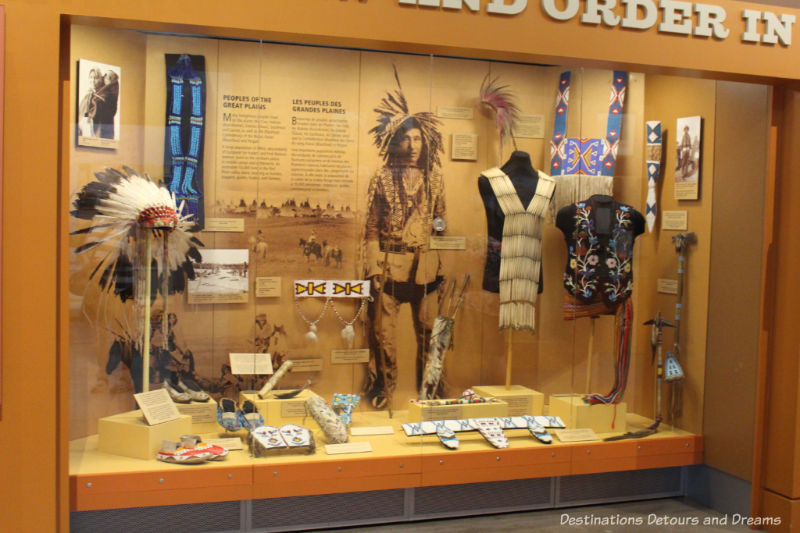
Stories of history are shaped by the lens through which they are told. I found it interesting to listen to audio recordings recount the North-West Rebellion from three perspectives: the Métis, the Cree, and the North-West Mounted Police. The North-West Rebellion was a violent and tragic confrontation in 1884 and 1885 between the Canada Government and certain western Métis and First Nations groups. It is still marked with controversy today. The Métis were concerned about the protection of their land and harvesting rights, and had been petitioning the government for over a decade. After a final petition failed, Louis Riel and the Métis formed a provisional government and drafted a Bill of Rights. They took militant action when their rights continued to be ignored. Some First Nations peoples became embroiled in the conflict between the NWMP and the Métis against their will when a march to declare loyalty and plead for rations was interpreted as a hostile siege. The NWMP warned the government in Ottawa that the Métis and First Nations were becoming frustrated about the failure to address long-standing grievances over land and treaty rights, but the government did not address the issue. After a battle between the NWMP and a group of Métis and First Nations rebels at Duck Lake forced the police to retreat, the government sent militia. After several battles, the rebellion ended when the Mêtis were defeated at the Seige of Batoche. Louis Riel was convicted of treason and hanged.
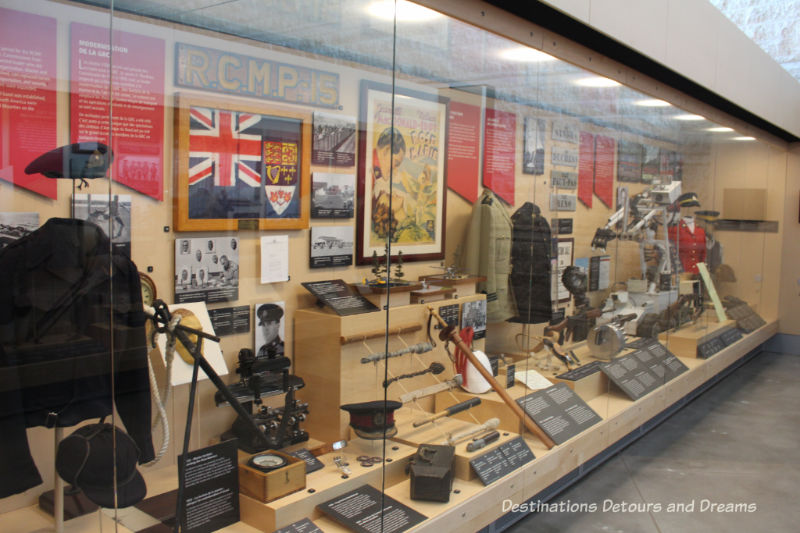
Gallery 4, Serving All of Canada, follows the RCMP’s timeline through the 20th and into the 21st centuries. Artifacts recount the evolution of the force and pieces of Canada’s history through world wars, the 1919 Winnipeg General Strike, the 1970 October Crisis, and more.
Musical Ride
The RCMP Musical Ride is a performance by 32 Mounties in red serge uniforms on horseback doing intricate figures and drills set to music. I’ve had the pleasure of seeing the performance a few times over the years and it always amazes me. The Preserving the Tradition gallery recounts the history of the Ride.
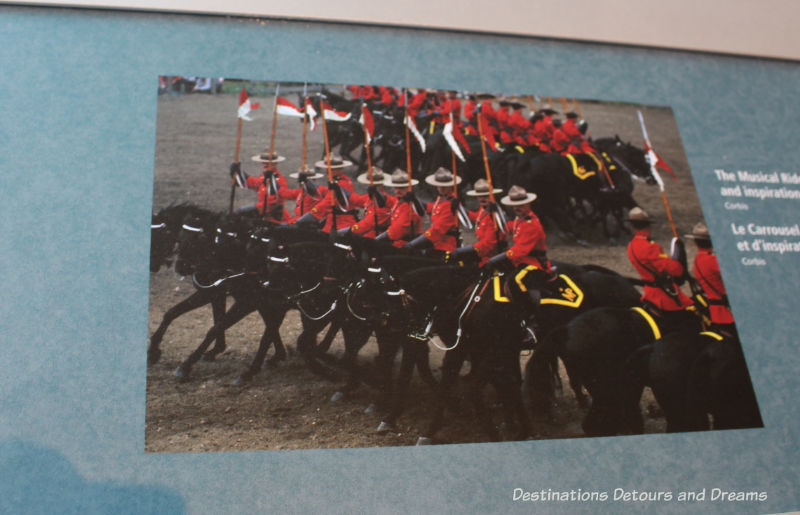
Mounted cavalry drills were part of the Mounted Police since their inception. Setting the drills to music was a way of relieving boredom while improving skills. In 1876, the NWMP opened their standard drill practice to the public. The first formal Musical Ride performances were held in Regina in 1887. By 1904, the rides were a feature of agricultural fairs across the prairies.
A highlight of the gallery is the opportunity to participate in the Musical Ride through 3D virtual reality. Straddling a fake “horse” and wearing virtual reality goggles, you become part of the Ride with other riders around you. It was a fun experience, although it did make me a little bit dizzy.
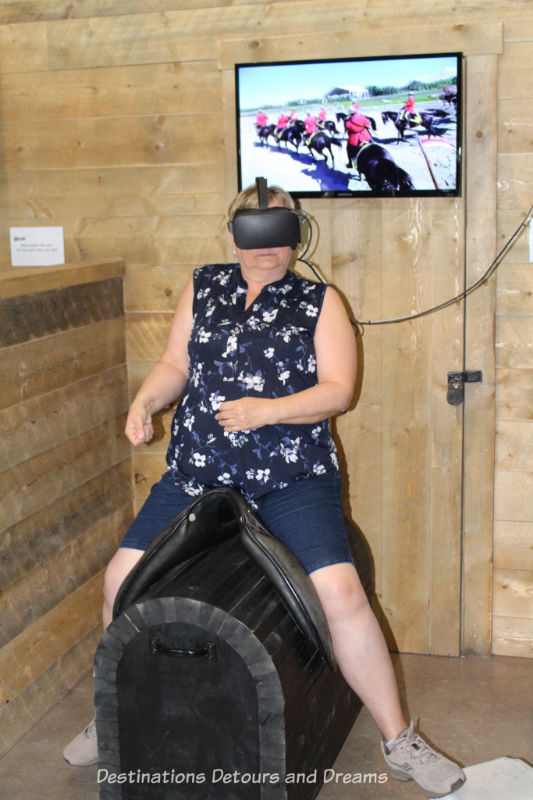
Other interactive exhibits give you to opportunity to feel what it is like to drive a police cruiser or have a Sergeant Major inspect your Cadet dorm room.
Cracking the Case
Gallery 6 highlights forensic techniques and detective work by following the steps of solving a particular case. I was so engrossed in tracking the clues and progress I took no photographs in this gallery.
Training Academy
Note: Visits to the Depot Division are currently suspended for safety reasons.
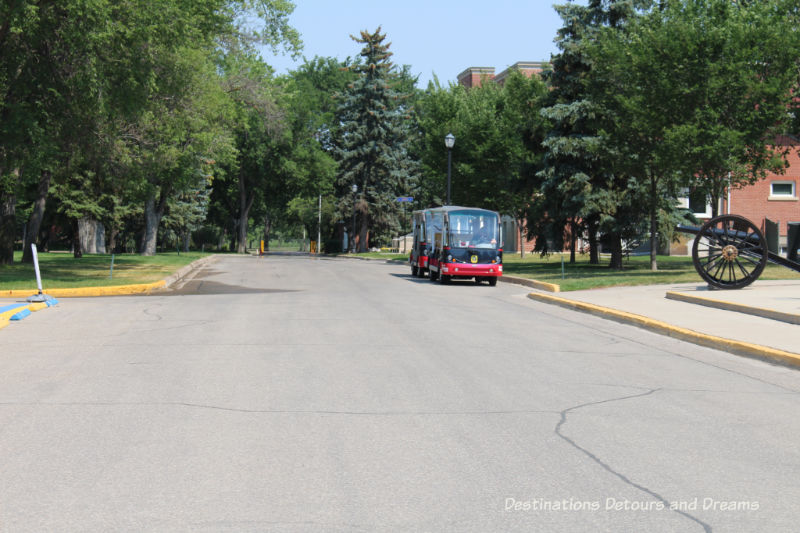
Regina “Depot” Division is the training centre for all of the Royal Canadian Mounted Police. Every two weeks, a new group of 32 cadets begins their six-month training period. They live onsite in individual rooms. A typical day lasts from 6 am to 4:30 pm, with some program-related duties occurring after hours. Streets in the base are named after Mounties who have died in the line of duty.
I took a guided riding tour through the academy base. The tour, available in summer months, was included with the price of admission to the RCMP Heritage Centre.
A short film about what is involved in the training program is screened in the theatre just outside the Centre’s galleries. I recommend watching it before or after taking the tour of the base. It will give you a better appreciation and make you think about whether you have what it takes to be a Mountie.
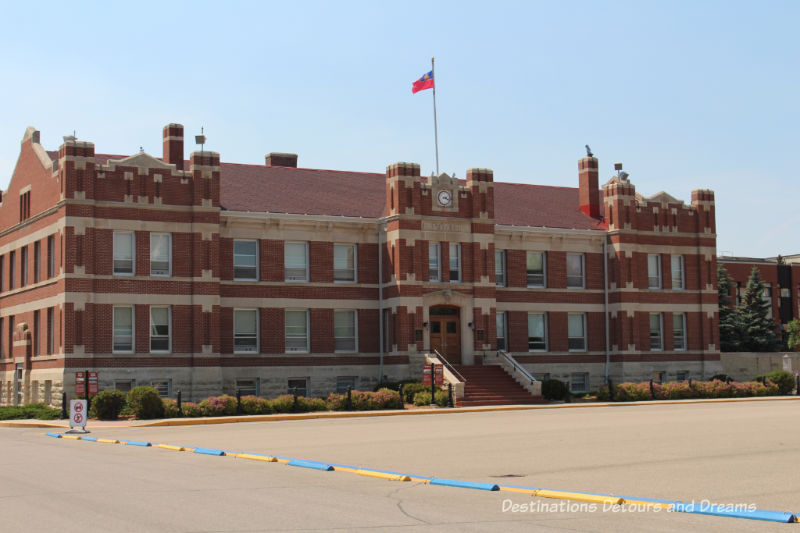
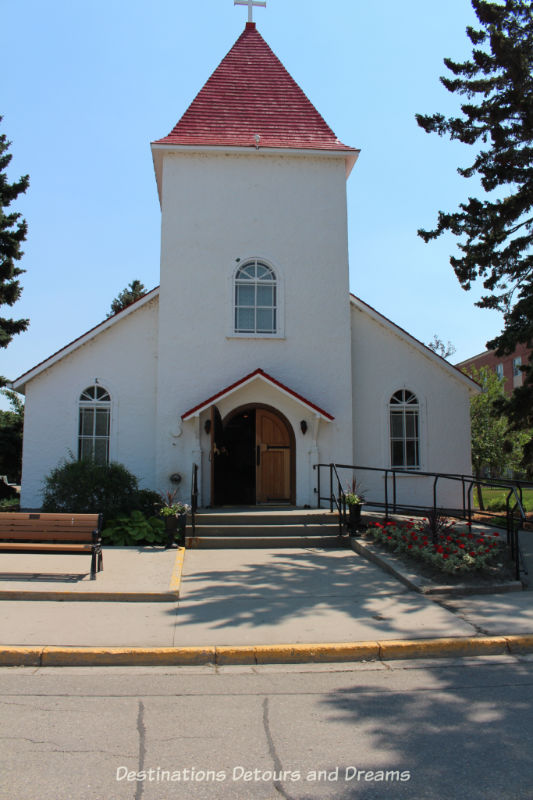
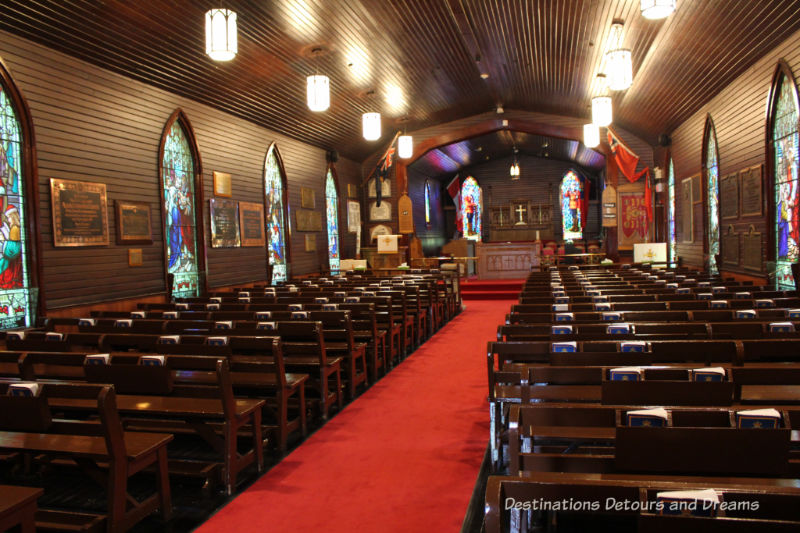
There were set times for the riding tour of Depot Division. We signed up as soon as we entered the centre to make sure we have a spot. You can view the galleries before and after the tour. When you go on the tour, you need to leave a photo id (driver licence or passport) with the main desk. Cameras, phones and bottled water are allowed as long as you hold them in your hand. No bags are allowed. Lockers with keys are available to stow your stuff. Photos are allowed on the base with the caveat that you take no close-ups of faces and no photos of any training scenarios. We passed a couple of scenarios with cars pulled to the side of the road and “arrests” underway.
Live events that can be viewed at the Depot include the daily (except Sunday) Sergeant Major’s parade when drill staff put cadets through their paces and the Sunset Ceremony, which occurs Tuesday evenings from the beginning of July to mid-August. The hour-long Sunset Ceremony, based on an old British tradition that signals the end of day and that all are safe and sound, features cadets in ceremonial dress. There is marching band, a cannon drill, and a lone trumpeter playing the retreat as the Canadian flag is lowered.
Practical Information
The RCMP Heritage Centre is open daily from 11 am to 5 pm with closures on Remembrance Day, Christmas, Boxing Day, Good Friday, and Easter Monday. Veterans of any police or military force receive free admission. Discounted admission is available for active members of the military or any police force.
Allow at least three to four hours for your visit.
Never miss a story. Sign up for Destinations Detours and Dreams monthly e-newsletter and receive behind-the-scenes information and sneak peaks ahead.
PIN IT

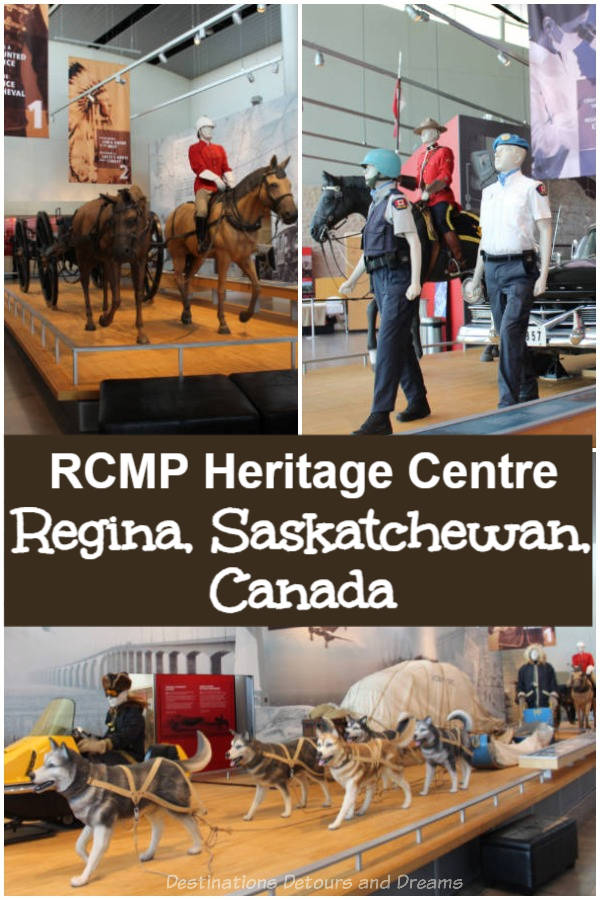
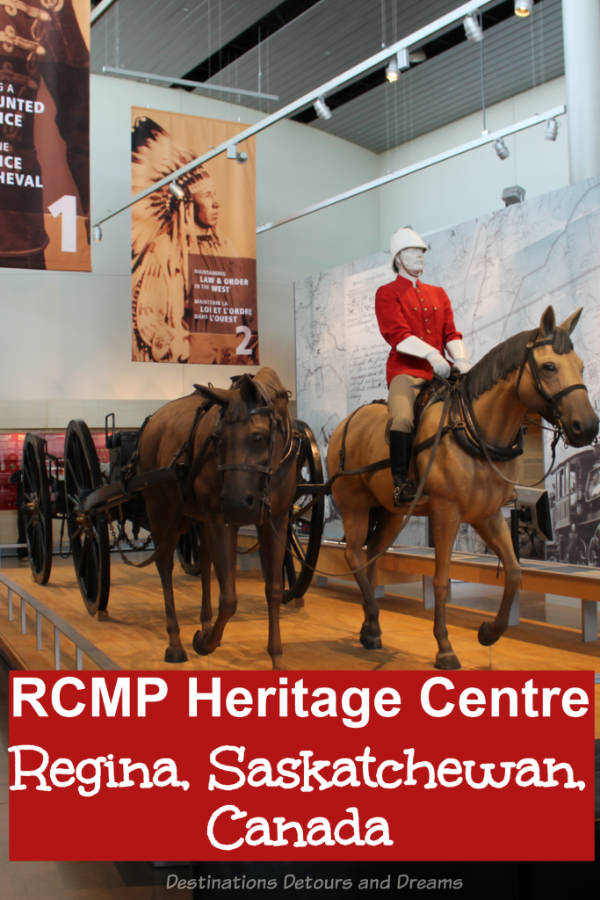
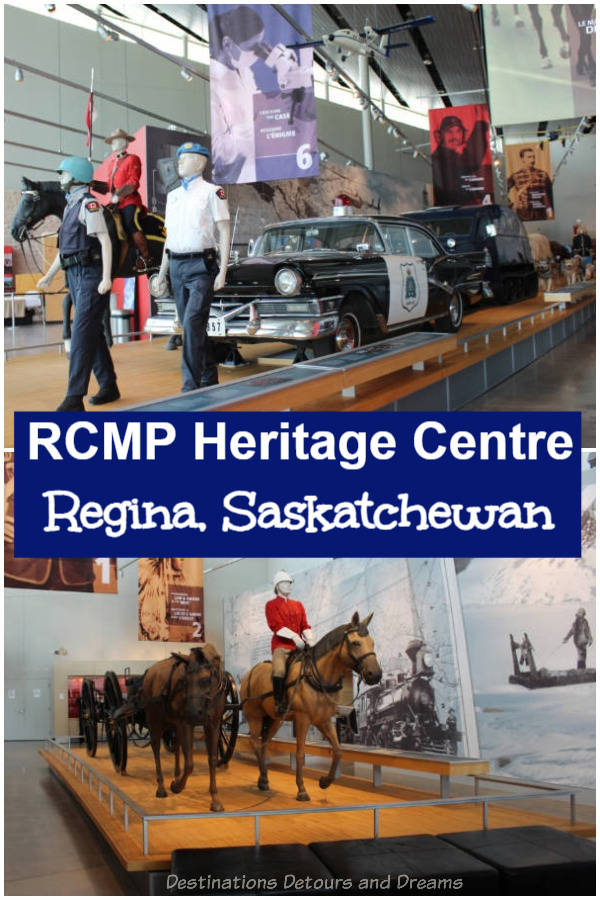
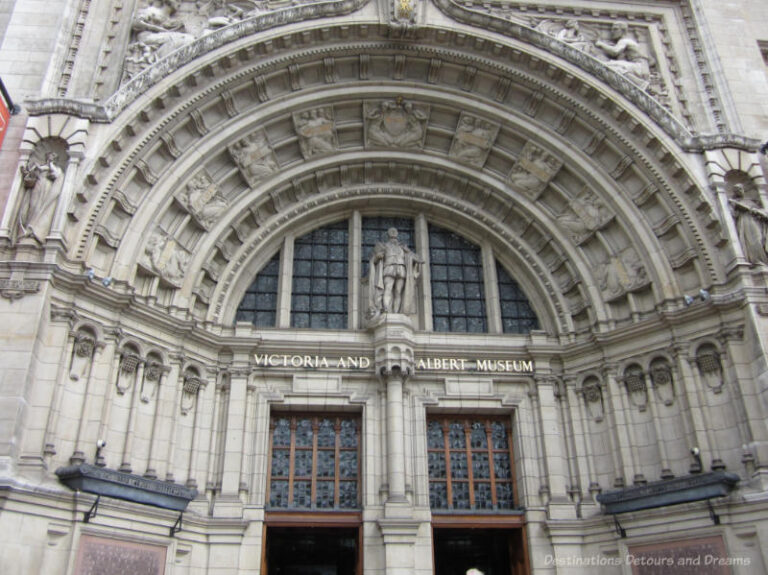
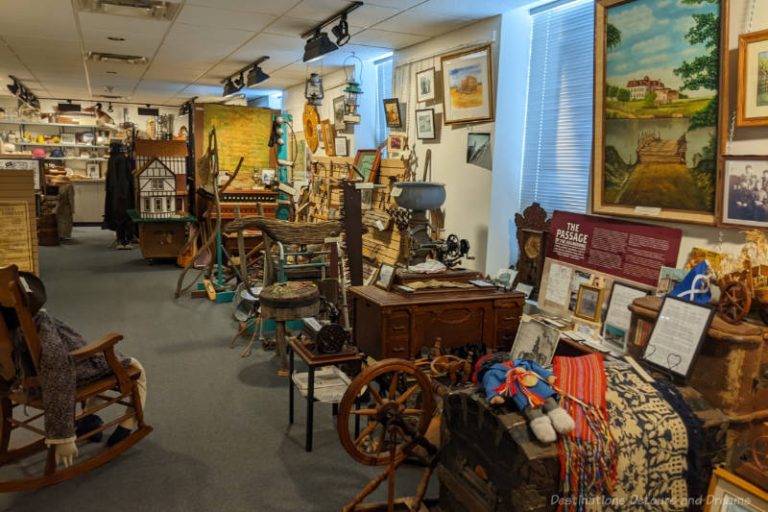
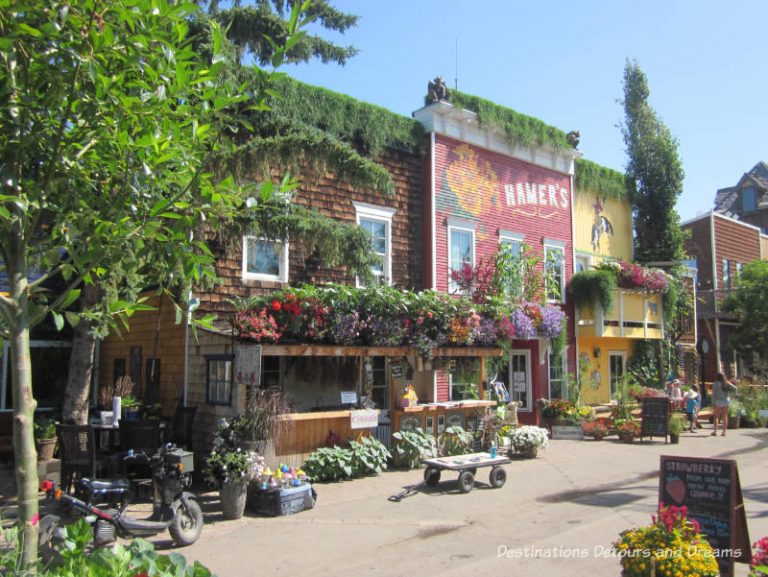
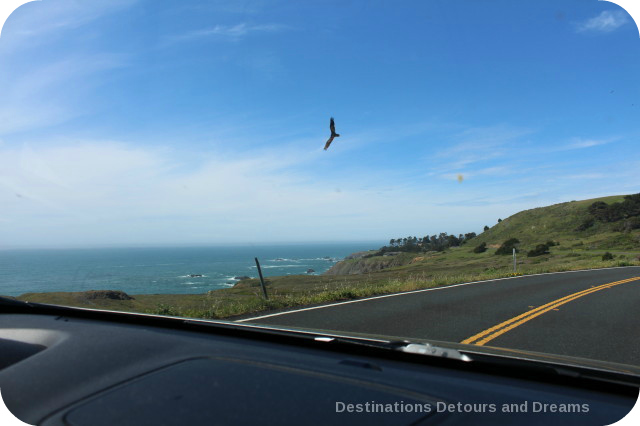
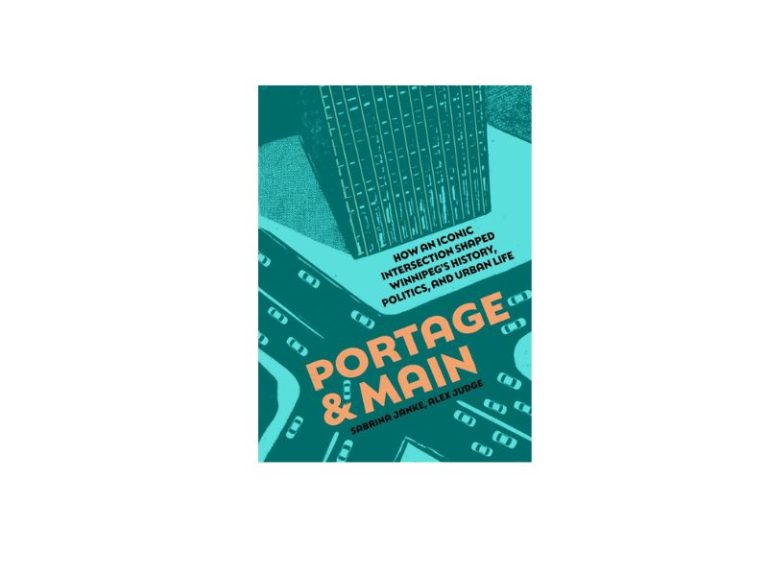
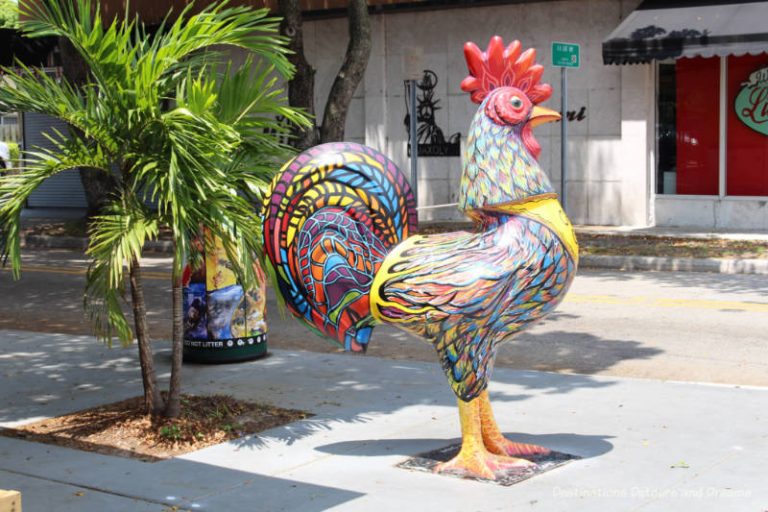
Not what we think of today as a police force. Looks to be a really interesting museum.
Ken, it is interesting – well worth a visit.
Definitely looks worth a visit. The VR musical ride must have been a very cool experience. You look like you’d have made a very stern officer in your photo wearing the red serge. 🙂
Deb, the VR ride was pretty cool. Photos can be deceiving sometimes – I don’t think I’d have been a particularly stern officer. Actually, after watching the video on the rigors of the training program, I don’t think I would have made it even part way through the training!
This looks like a great museum, Donna and I love the photo of you astride the horse with the VR goggles riding with the RCMPs! Interactive learning at its most fun! I can see why you may have had some reluctance to visit at the beginning but the museum looks fascinating and it does a great job of intertwining Canada’s recent history with the Mounted Police’s. Anita
Anita, there was a lot of Canadian history at the museum. It really brought home how intertwine the Mounted Police was with that history.
I love the fact that they haven’t changed their name even though most of them are now “mounted” in vehicles. I also love their dress uniforms. Nothing like brilliant red to signify, “We’re here!”.
Added to my Canada Pinterest board!
Suzanne, the dress uniforms are really striking, aren’t they?
The story of Métis and First Nations is quite the saga. I always enjoy watching the synchronized horse & riders. That can be pretty amazing. With cops still dressed with such style!
RoseMary, there is a lot of history at the Museum. I too enjoy watching musical horse rides. Such precision and style!
That VR ride looks like great fun! When I think of the RCMP, I think of the nineties TV series called Due South. It portrayed Mounties as honest, a bit naive, but very good at solving crimes at the same time. I wonder how true to life it was.
Rachel, I watched that show a few times. I think ii was more intended to be a bit of fun by playing with stereotypes of both Canadian Mounties and American police than true to life.
What an offbeat and fun attraction! So interactive too…loved seeing you dressed up as a mountie!
Irene, it was very interesting. And people had fun with the dress-up.